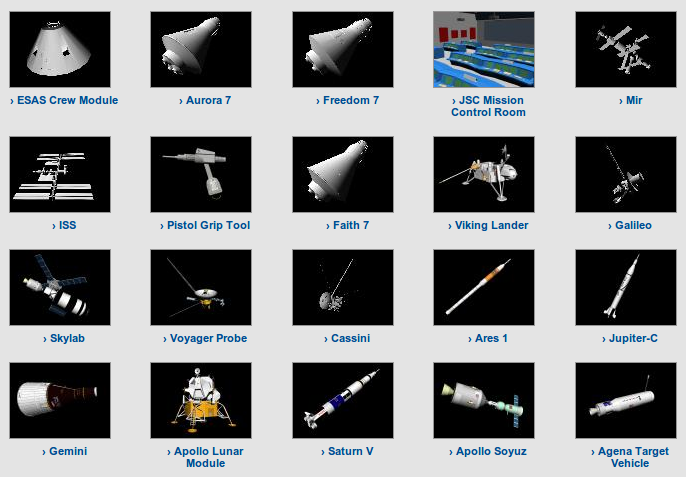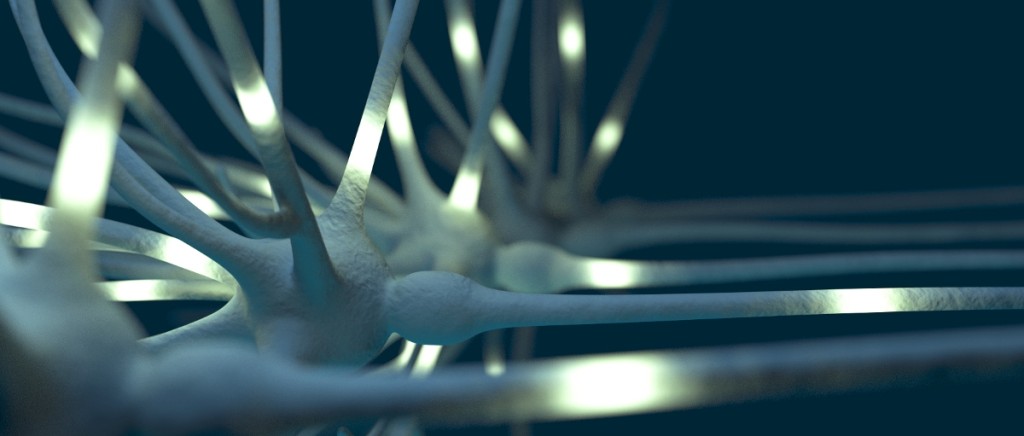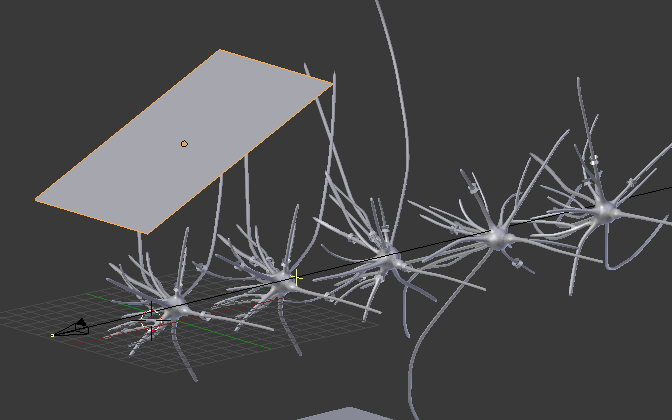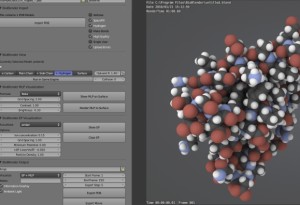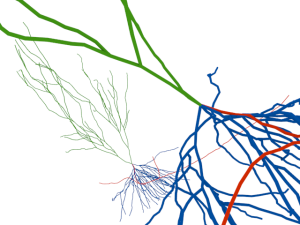For all 3D and space enthusiast, this might be very interesting. NASA offers 3D models for many of their spaceships, satellites and devices they used in the past (e.g. the opportunity rover, the Apollo lunar module) as free download on their website. Most models are in 3ds or obj-format which should be readable by most 3d-tools. Some of them are even in Blender.
Neural network visualization
Recently, I was asked to create an abstract illustration of my current project. This is what I came up with. I work on an artificial neural network model of the cortex-hippocampus-loop in the brain. In particular, I am interested in the transformation of population activity into a spatio-temporal spiking pattern that results from converging connections from the cortex to the hippocampal loop. Spike-timing and heterogenous conduction delays between neurons are crucial properties in this model.
The picture was created in Blender and rendered in Cycles.
Allen Brain Atlas as SVG
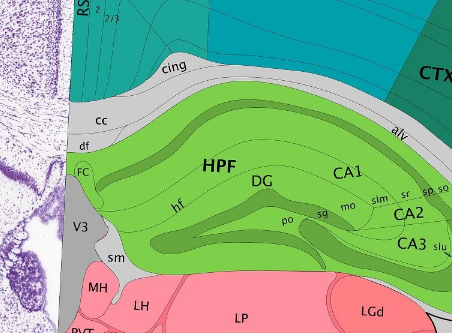 Just discovered that you can download single images of the Allen Brain Atlas as SVG-files. This tutorial explains how to download the vector files. The simplest way is to use this URL in your browser
Just discovered that you can download single images of the Allen Brain Atlas as SVG-files. This tutorial explains how to download the vector files. The simplest way is to use this URL in your browser
http://api.brain-map.org/api/v2/svg_download/plane_id?groups=28
Where plane_id is the id of the plane you want to download, e.g.
http://api.brain-map.org/api/v2/svg_download/100960084?groups=28
Very cool, that they share all the data in an open source vector format.
Neural Networks: What should we borrow from biology?
This is a nice (and freely available) article by Oliver Coleman:
Models of the brain: What Should We Borrow From Biology?
It was presented on the AAAI Symposium How Should Intelligence Be Abstracted in AI Research and reviews several basic properties of neural networks that are possibly of critical importance for their functioning but mostly neglected in artificial neural networks. This is a great article for every computer scientist interested in neural networks and in the neuroscientific perspective on neural networks. It is hopefully a source of inspiration for new and more complete models.
Learn music the right way
After you know the basics for an instrument and you can play a few songs, it becomes more and more attractive to play freely any song you hear and like. This is not that difficult ones you know the chord progression for a song. Hooktheory is a huge database for chord progressions but, in contrast to other websites, it gives you the relative chords for a certain key (like VI-IV-I-V) and not the name of the chords in a certain key (like Am-F-C-G). This is exactly the way a musician needs it when you have your favorite keys in which you like to play and you are just interested in the progression itself. It is also a much better way to understand the principles behind music. Hooktheory is a great website for this as the database has a very high quality standard, provides the chords along with a midi-file and a Youtube-video of your song and displays the chord progression for any key you like.
And to get an additional boost of motivation to learn how to play any song you like, I recommend all the videos created by Collective Cadenza.
Blender in Science
Blender is becoming increasingly important for scientific purposes. Its close integration of Python makes it extremely flexible and suitable for visualization of scientific data but also for simulations. Prominent examples are BioBlender, an add-on to visualize and study proteins,
and MORSE, a robot simulator.
MORSE 1.0 Trailer from HCAI TUM on Vimeo.
A few months ago, Py3DN appeared, which is another add-on for Blender to visualize and analyse morphological data of neurons.
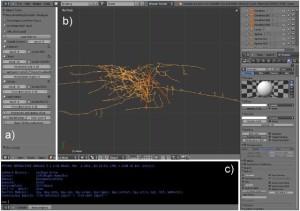 Good tools, which show that Blender is becoming a powerful environment for the fast development of specialized software tools.
Good tools, which show that Blender is becoming a powerful environment for the fast development of specialized software tools.
SWC Neuromorph.org importer for Blender
Neuromorph.org is a website with a huge database of neuron morphologies, which can be downloaded in the SWC-format. As I wanted to display those neurons in Blender and could not find any importer, I wrote a small Python script that does the job for me. I thought it might be worth sharing this script just in case anybody else wants to use Blender to display and render the morphology of realistic neurons.
Update 27.05.2015:
The script is now available at Github.
How Animation is Made
When you are interested and familiar with animation projects, most of the things Turi Scandurra has to say may sound familiar to you. But nevertheless, it is quite intriguing to see which thoughts and aims guided the design process of his animation “oranguerrilla”. Thanks for creating this 10min “these were my thoughts while I created the movie”-video.
Canon DSLRs can now shoot in RAW
Amazing, Canon DSLRs like the 5D Mark III but even the 550D can now shoot in RAW format thanks to Magic Lantern.
14 bit Magic Lantern RAW video (and RAW HDR video) on 5D2 from Africashot on Vimeo.
Free eBook: Experiments in Matlab
What a great eBook for learning how to solve problems in Matlab: Experiments in Matlab. It covers topics like Google Page Rank, Game of Life, Sudoko, Shallow Water Equations any many more. A perfect tutorial like introduction that shows you immediately the practical use of being able to program (in any kind of language).

